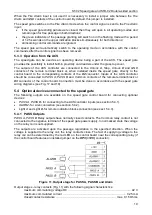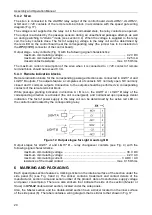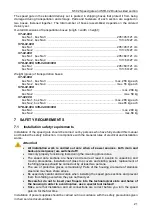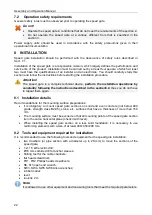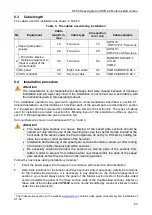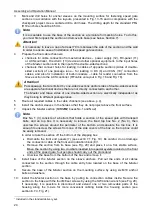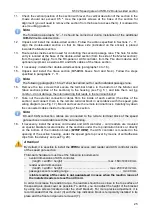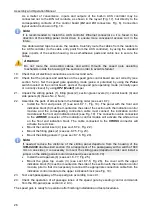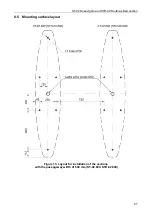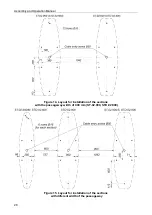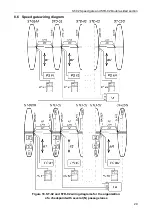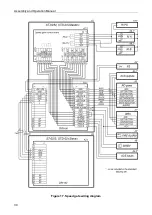
ST-02 Speed gate and STD-02 Double-sided section
15
5.2.7 Control modes
There are two control modes – pulse and potential. In both modes the speed gate is controlled by
sending commands (i.e. control signals combinations) to the control inputs:
Unlock A
,
Stop
and
Unlock B
and special
Fire Alarm
control input. Operation algorithm changes depending on the
selected mode.
Attention!
Change of the switches positions, removal, and installation of jumpers on speed gate
boards should be carried out only when the speed gate is switched off.
The control mode is selected by the
Pulse
switch located on the speed gate control board
(see Fig. 1). By default, the switch is in the
ON
position, which corresponds to the pulse control
mode of the speed gate.
Move the switch to the
OFF
position in order to place the speed gate in potential control mode. The
control mode will be changed after the speed gate is switched on.
Pulse control mode
The mode is used to control the speed gate by using RC-panel, WRC device and ACS controller
with outputs that support pulse control mode.
The description of the speed gate operation in pulse control mode is shown in Table 5.
Control signal duration when sending a control command to control inputs must be not less
than100 ms. The default time-out period is 8 seconds and does not depend on the duration of the
control signal (pulse).
The operation algorithm, that are a combination of control signals, is given in Appendix 1. The
control command is an active front of the control signal (shift of the signal from high level to low
level) on any of the control inputs (
Unlock A
,
Unlock B
and
Stop
), in case there are corresponding
signal levels on other inputs.
Note:
The active front of the signal corresponds to pressing the corresponding button on the RC-
panel / WRC-device. The low-level signal corresponds to the pressed button, high-level -not
pressed.
Potential control mode
The mode is used to control the speed gate by using the ACS controller with outputs that support
potential control mode. The description of the speed gate operation in potential control mode is
shown in the Table 6.
Control signal duration when sending a control command to control inputs must be not less
than100 ms. The default time-out period is equal to the duration of the control signal. I. e. - if there
is a low-level signal on the input at the moment of passage in the authorized direction, then the
speed gate will remain open in the selected direction.
The operation algorithm is given in Appendix 2. Both directions are closed when a low-level signal
is sent to the
Stop
input, regardless of the signal levels at the
Unlock A
and
Unlock B
inputs. The
directions are switched to the mode corresponding to the signal levels at the
Unlock A
and
Unlock
B
inputs when the low-level signal is removed from the
Stop
input.
Note:
When the speed gate is operated from the ACS controller, the high-level control signal
corresponds to the open contacts of the output relay of the controller or the closed output
transistor. Low level - the output relay contacts are closed or the output transistor is opened.
5.2.8 Speed gate operation algorithm
The speed gate supports two operating modes:
1. Normally closed mode (
XP2 (Mode1)
jumper is not installed):
•
speed gate sliding panels are in closed position; the speed gate passageway is permanently
locked;



















